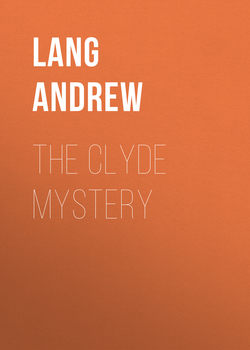Читать книгу The Clyde Mystery - Lang Andrew, May Kendall - Страница 2
I – THE CLYDE MYSTERY
ОглавлениеThe reader who desires to be hopelessly perplexed, may desert the contemplation of the Fiscal Question, and turn his eyes upon The Mystery of the Clyde. “Popular” this puzzle cannot be, for there is no “demmed demp disagreeable body” in the Mystery. No such object was found in Clyde, near Dumbarton, but a set of odd and inexpensive looking, yet profoundly enigmatic scraps of stone, bone, slate, horn and so forth, were discovered and now repose in a glass case at the National Museum in Queen Street, Edinburgh.
There, as in the Morgue, lies awaiting explanation the corpus delicti of the Clyde Mystery. We stare at it and ask what are these slate spear heads engraved with rude ornament, and certainly never meant to be used as “lethal weapons”? What are these many-shaped perforated plaques of slate, shale, and schist, scratched with some of the old mysterious patterns that, in almost every part of the world, remain inscribed on slabs and faces of rock? Who incised similar patterns on the oyster-shells, some old and local, some fresh —and American! Why did any one scratch them? What is the meaning, if meaning there be, of the broken figurines or stone “dolls”? They have been styled “totems” by persons who do not know the meaning of the word “totem,” which merely denotes the natural object, – usually a plant or animal, – after which sets of kinsfolk are named among certain savage tribes. Let us call the little figures “figurines,” for that commits us to nothing.
Then there are grotesque human heads, carved in stone; bits of sandstone, marked with patterns, and so forth. Mixed with these are the common rude appliances, quern stones for grinding grain; stone hammers, stone polishers, cut antlers of deer, pointed bones, such as rude peoples did actually use, in early Britain, and may have retained into the early middle ages, say 400-700 a. d.
This mixed set of objects, plus the sites in which they were found, and a huge canoe, 35 feet long, is the material part of the Clyde Mystery. The querns and canoe and stone-polishers, and bones, and horns are commonly found, we say, in dwellings of about 400-700 a. d. The peculiar and enigmatic things are not elsewhere known to Scottish antiquaries. How did the two sets of objects come to be all mixed up together, in an old hill fort, at Dunbuie on Clyde; and among the wooden foundations of two mysterious structures, excavated in the mud of the Clyde estuary at Dumbuck and Langbank, near Dumbarton? They were dug up between 1896 and 1902.
This is the question which has been debated, mainly in newspaper controversy, for nearly ten years. A most rambling controversy it has been, casting its feelers as far as central Australia, in space, and as far back as, say, 1200 b. c. in time.
Either the disputed objects at the Museum are actual relics of life lived in the Clyde basin many centuries ago; or the discoverers and excavators of the old sites are dogged by a forger who “dumps down” false relics of kinds unknown to Scottish antiquaries; or some of the unfamiliar objects are really old, while others are jocose imitations of these, or – there is some other explanation!
The modern “Clyde artists” are credited by Dr. Robert Munro with “some practical artistic skill,” and some acquaintance with the very old and mysterious designs on great rocks among the neighbouring hills. 1 What man of artistic skill, no conscience, and a knowledge of archaic patterns is associated with the Clyde?
The “faker” is not the mere mischievous wag of the farm-house or the country shop. It is possible that a few “interpolations” of false objects have been made by another and less expert hand, but the weight of the problem rests on these alternatives, – the disputed relics which were found are mainly genuine, though unfamiliar; or a forger not destitute of skill and knowledge has invented and executed them – or – there is some other explanation.
Three paths, as usual, are open to science, in the present state of our knowledge of the question. We may pronounce the unfamiliar relics genuine, and prove it if we can. We may declare them to be false objects, manufactured within the last ten years. We may possess our souls in patience, and “put the objects to a suspense account,” awaiting the results of future researches and of new information.
This attitude of suspense is not without precedent in archaeology. “Antiquarian lore,” as Dr. Munro remarks by implication, can “distinguish between true and false antiquities.” 2 But time is needed for the verdict, as we see when Dr. Munro describes “the Breonio Controversy” about disputed stone objects, a controversy which began in 1885, and appears to be undecided in 1905. 3 I propose to advocate the third course; the waiting game, and I am to analyse Dr. Munro’s very able arguments for adopting the second course, and deciding that the unfamiliar relics are assuredly impostures of yesterday’s manufacture.
1
Archaeology and False Antiquities, pp. 259-261. By Robert Munro, M.A., M.D., LL.D., F.R.S.E., F.S.A.Scot. Methuen & Co., London, 1905.
2
Munro, p. xii.
3
Munro, pp. 56-80. Cf. L’Homme Prehistorique, No. 7, pp. 214-218. (1905.)
